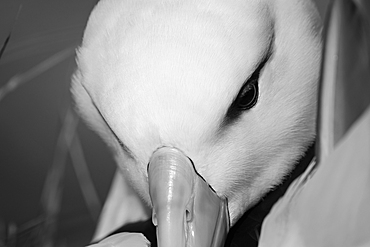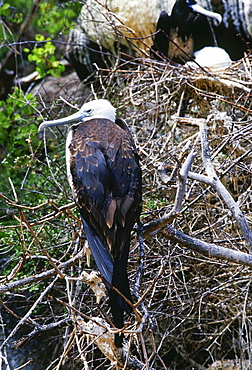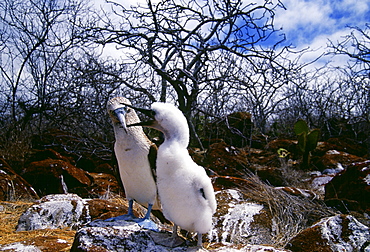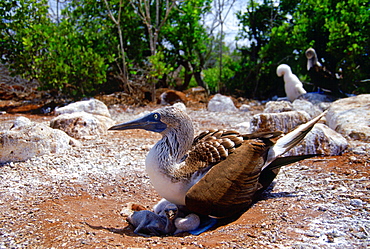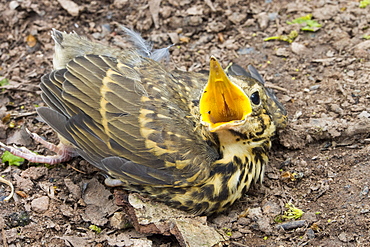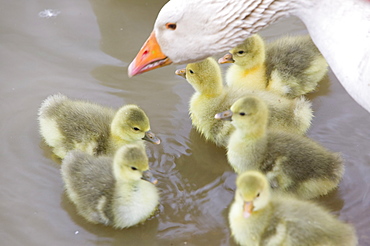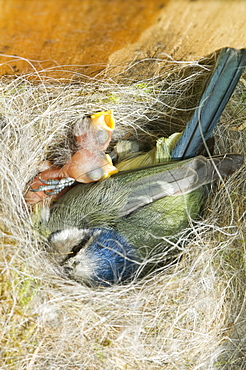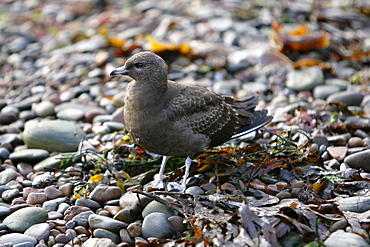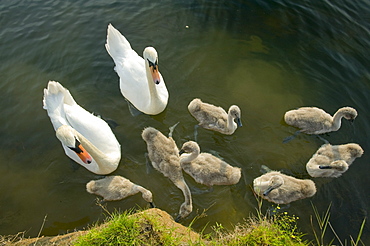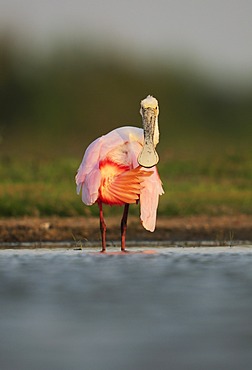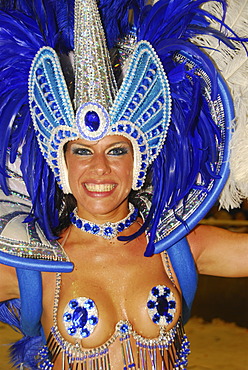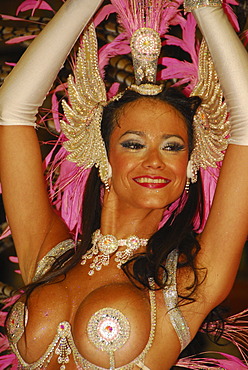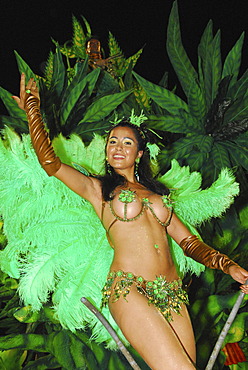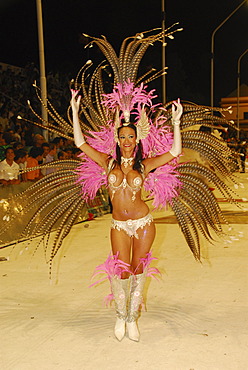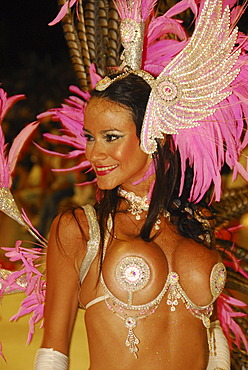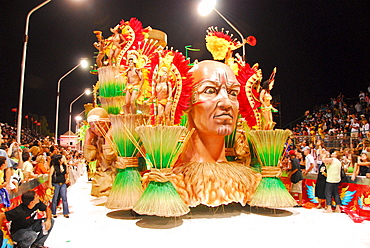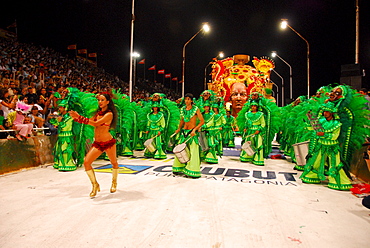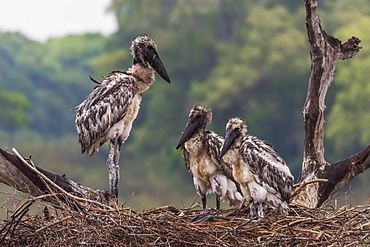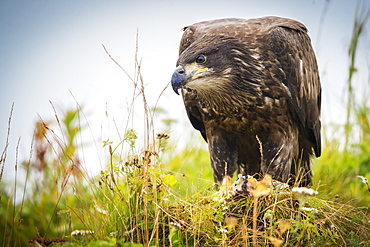Results
12 results found
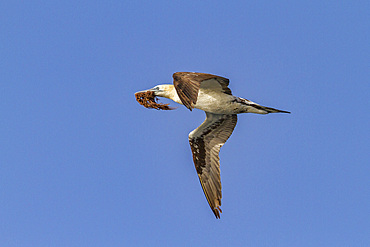
Young northern gannet (Morus bassanus) in flight near Ile des Oiseaux in the Parc National du Delta du Saloum, UNESCO World Heritage Site, Senegal, West Africa, Africa
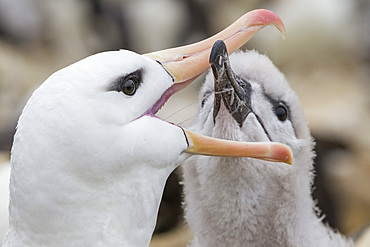
Black-browed albatross (Thalassarche melanophrys) adult feeding chick at nesting site on West Point Island, Falkland Islands, South America
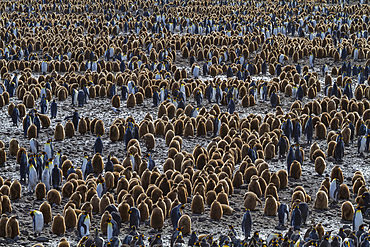
King penguins (Aptenodytes patagonicus) in downy plumage (okum boys) on South Georgia Island, Polar Regions
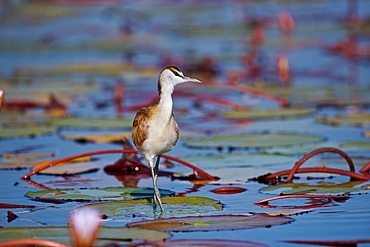
Juvenile African Jacana, (Actophilornis africana), stalking prey in water lilies, Chobe National Park, Botsuana, Africa
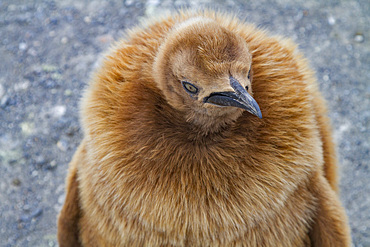
King penguin (Aptenodytes patagonicus) in downy plumage (okum boys) on South Georgia Island, Polar Regions

Nazca booby (Sula grantii) downy chick in the Galapagos Island Archipelago, UNESCO World Heritage Site, Ecuador, South America
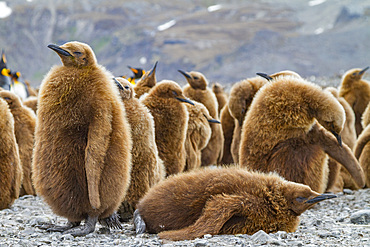
King penguins (Aptenodytes patagonicus) in downy plumage (okum boys) on South Georgia Island, Polar Regions
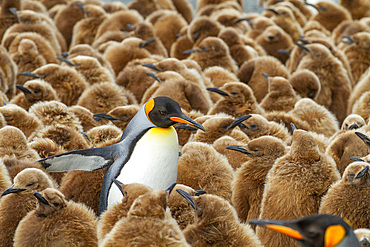
Adult king penguin (Aptenodytes patagonicus) amongst chicks at breeding colony at Gold Harbour, South Georgia Island, Polar Regions
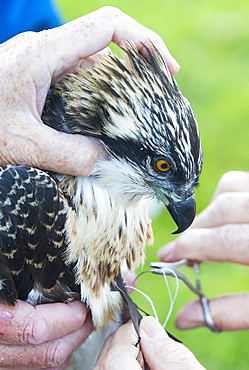
On Friday 11th July 2014, the Young Ospreys that nest on Bassenthwaite in the Lake District National Park, Cumbria, UK, are ringed and fitted with a satelite tracker. they are ringed by Pete Davis, a licensed bird ringer, and the satelite tracker is fitred by Roy Dennis. Roy is theonly person in the UK, licensed to fit satelite trackers to birds of prey. The tracing is part of the Bassenthwaite Osprey project, to see whereabouts in Africa the young migrate to, before returning hopefully to the UK to nest.Ospreys recolonized the Lake district in 2001, after an absence ovf over 150 years. In the last fourteen years of breeding over half a million people have visited the project to view these spectacular fish eating birds.
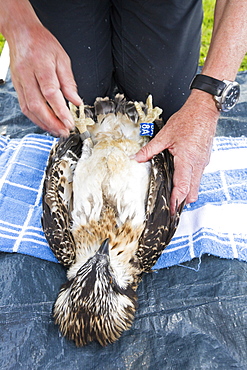
On Friday 11th July 2014, the Young Ospreys that nest on Bassenthwaite in the Lake District National Park, Cumbria, UK, are ringed and fitted with a satelite tracker. they are ringed by Pete Davis, a licensed bird ringer, and the satelite tracker is fitred by Roy Dennis. Roy is theonly person in the UK, licensed to fit satelite trackers to birds of prey. The tracing is part of the Bassenthwaite Osprey project, to see whereabouts in Africa the young migrate to, before returning hopefully to the UK to nest.Ospreys recolonized the Lake district in 2001, after an absence ovf over 150 years. In the last fourteen years of breeding over half a million people have visited the project to view these spectacular fish eating birds.
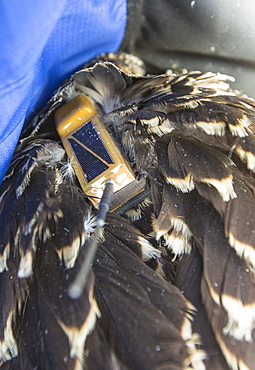
On Friday 11th July 2014, the Young Ospreys that nest on Bassenthwaite in the Lake District National Park, Cumbria, UK, are ringed and fitted with a satelite tracker. they are ringed by Pete Davis, a licensed bird ringer, and the satelite tracker is fitred by Roy Dennis. Roy is theonly person in the UK, licensed to fit satelite trackers to birds of prey. The tracing is part of the Bassenthwaite Osprey project, to see whereabouts in Africa the young migrate to, before returning hopefully to the UK to nest.Ospreys recolonized the Lake district in 2001, after an absence ovf over 150 years. In the last fourteen years of breeding over half a million people have visited the project to view these spectacular fish eating birds.

On Friday 11th July 2014, the Young Ospreys that nest on Bassenthwaite in the Lake District National Park, Cumbria, UK, are ringed and fitted with a satelite tracker. they are ringed by Pete Davis, a licensed bird ringer, and the satelite tracker is fitred by Roy Dennis. Roy is theonly person in the UK, licensed to fit satelite trackers to birds of prey. The tracing is part of the Bassenthwaite Osprey project, to see whereabouts in Africa the young migrate to, before returning hopefully to the UK to nest.Ospreys recolonized the Lake district in 2001, after an absence ovf over 150 years. In the last fourteen years of breeding over half a million people have visited the project to view these spectacular fish eating birds.
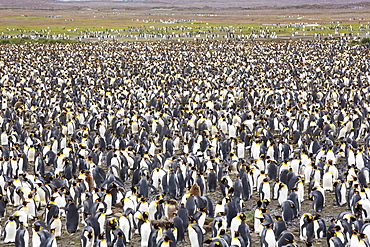
King Penguins in the world's second largest King Penguin colony on Salisbury Plain, South Georgia, Southern Ocean.
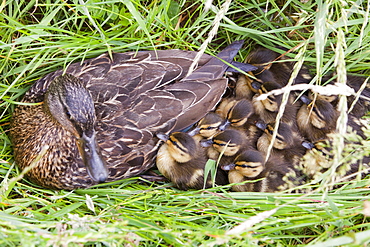
A female Mallard with her newly hatched chicks on Walney Island, Cumbria, England, United Kingdom, Europe
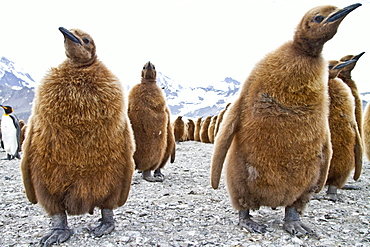
King penguins (Aptenodytes patagonicus) in downy plumage (often called "okum boys") on South Georgia Island, Southern Ocean.
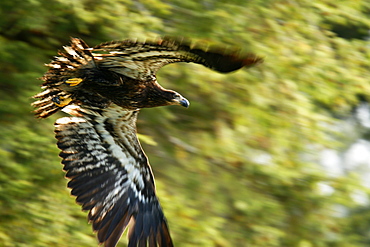
Juvenile bald eagle (Haliaeetus leucocephalus) in flight in Takatz Bay on Baranof Island, Southeast Alaska, USA
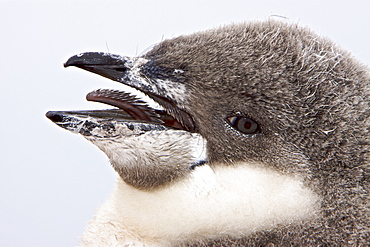
Chinstrap penguin (Pygoscelis antarctica) chick head detail at colony on Useful Island near the Antarctic Peninsula. There are an estimated 2 million breeding pairs of chinstrap penguins in the Antarctic peninsula region alone, perhaps as many as 7.5 million breeding pairs in all of Antarctica. Their name derives from the narrow black band under their heads which makes it appear as if they are wearing black helmets, making them one of the most easily identified types of penguin. Other names for them are "Ringed Penguins", "Bearded Penguins", and "Stonecracker Penguins" due to their harsh call. They grow to 68 cm (27 in). The average adult weight of a Chinstrap Penguin is 4.5 kg (10 lbs). Weight can range from 3 to 6 kg (6.6-13.2 lbs), with males being slightly larger and weight varying based on where the penguin is in the breeding cycle. Their diet consists of krill, shrimp, and fish. On land they build circular nests from stones, and lay two eggs, which are incubated by both the male and the female for shifts of five to ten days. They can also breed on icebergs, though they prefer non-icy conditions. The chicks hatch after about 35 days, and have fluffy gray backs and white fronts. The chicks stay in the nest for 20?30 days before they go to join a creche. At around 50?60 days old, they moult, gaining their adult plumage and go to sea. The Chinstrap Penguin was first described by German naturalist Forster in 1781. Its specific epithet was often seen as antarctica, however a 2002 review determined the genus Pygoscelis was masculine, and hence the correct binomial name is Pygoscelis antarcticus.
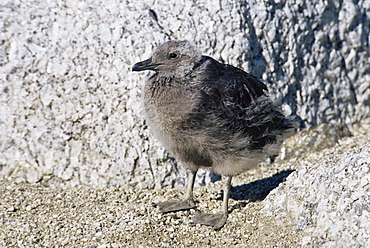
South polar skua (Catharacta maccormicki) chick about to fledge, will have much lighter plumage cf to Brown skua, Ross Sea, Antarctica, Southern Ocean
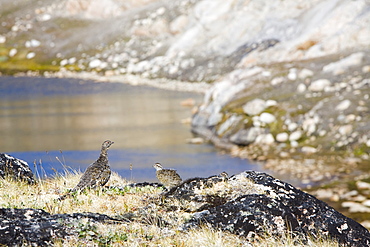
A female ptarmigan with young on the Greenland tundra near Camp Victor, west Greenland, Polar Regions
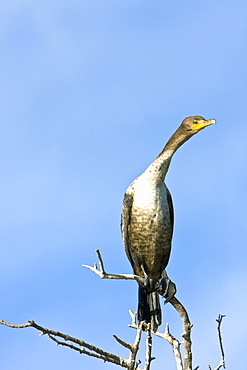
Juvenile double-crested cormorant (Phalacrocorax auritus) in Magdalena Bay between Isla Magdalena and the Baja Peninsula, Baja California Sur, Mexico. Note the light chest and neck in juveniles.

Juvenile bald eagle (Haliaeetus leucocephalus) in flight in Takatz Bay on Baranof Island, Southeast Alaska, USA
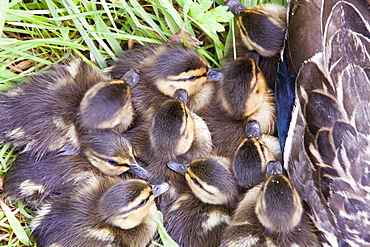
A female Mallard with her newly hatched chicks on Walney Island, Cumbria, England, United Kingdom, Europe
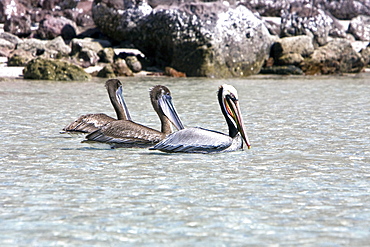
Two juvenile brown pelicans (Pelecanus occidentalis) behind an adult in the lower Gulf of California (Sea of Cortez), Mexico. Note the uniform drab brown coloration of the juvenile plumage.
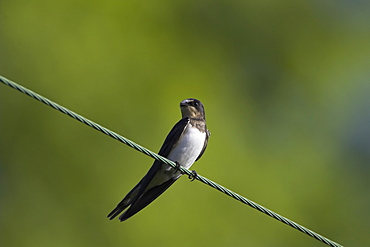
Juvenille Swallow (Hirundo rustica) preening on power lines and cables. Swallows often perch on power lines and telephone cables, calling, resting and preening.. Argyll, Scotland
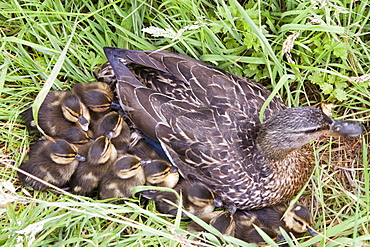
A female Mallard with her newly hatched chicks on Walney Island, Cumbria, England, United Kingdom, Europe

King penguins (Aptenodytes patagonicus) in downy plumage (often called "okum boys") on South Georgia Island, Southern Ocean.
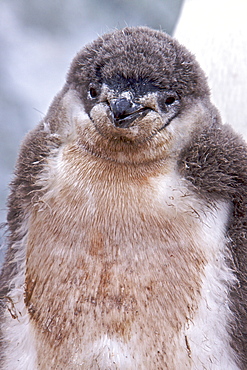
Guano-covered chinstrap penguin (Pygoscelis antarctica) chick at breeding colony on Useful Island near the Antarctic Peninsula
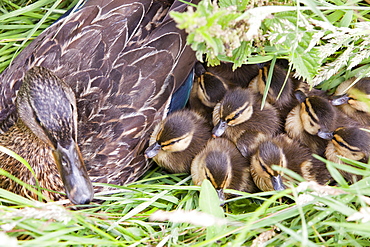
A female Mallard with her newly hatched chicks on Walney Island, Cumbria, England, United Kingdom, Europe

A female Mallard with her newly hatched chicks on Walney Island, Cumbria, England, United Kingdom, Europe

Chinstrap penguin (Pygoscelis antarctica) parent and chick at breeding colony on Useful Island near the Antarctic Peninsula
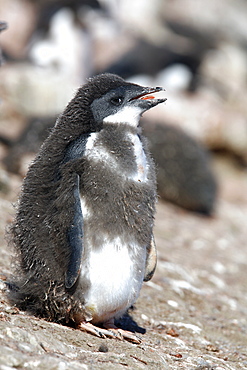
Adelie penguin (Pygoscelis adeliae) chick molting its downy feathers with adult plumage beneath on Devil Island near the Antarctic Peninsula.
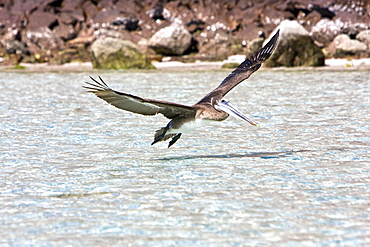
Juvenile brown pelican (Pelecanus occidentalis) in the lower Gulf of California (Sea of Cortez), Mexico. Note the uniform drab brown coloration of the juvenile plumage.
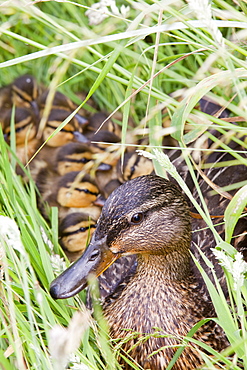
A female Mallard with her newly hatched chicks on Walney Island, Cumbria, England, United Kingdom, Europe
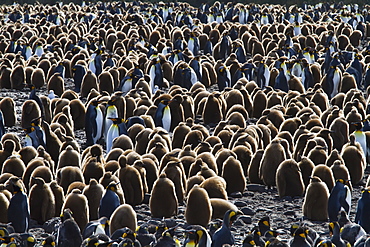
King penguins (Aptenodytes patagonicus) in downy plumage (often called "okum boys") on South Georgia Island, Southern Ocean.
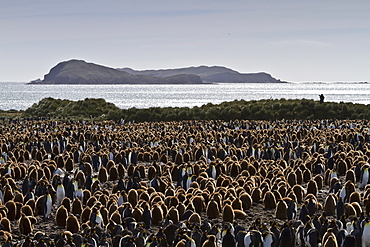
King penguins (Aptenodytes patagonicus) in downy plumage (often called "okum boys") on South Georgia Island, Southern Ocean.
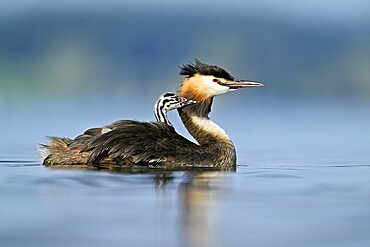
Great Crested Grebe (Podiceps Scalloped ribbonfish), with chicks in plumage swimming in the water, Lake Zug, Canton Zug, Switzerland
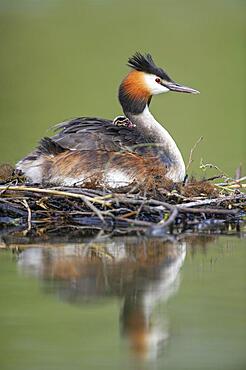
Great crested grebe (Podiceps cristatus) at the nest with young bird in plumage, Oldenburger Muensterland, Vechta, Lower Saxony, Germany, Europe

King penguin (Aptenodytes patagonicus) with chicks, breeding colony, Volunteer Point, Falkland Islands, South America
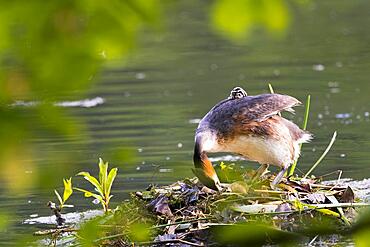
Great crested grebe (Podiceps cristatus) on nest with young bird in plumage, turning eggs, Hesse, Germany, Europe
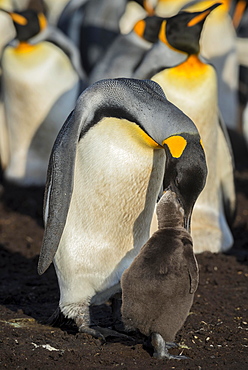
King penguin (Aptenodytes patagonicus) feeds chicks, breeding colony, Volunteer Point, Falkland Islands, South America
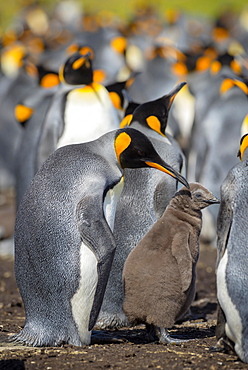
King penguin (Aptenodytes patagonicus) with chicks, breeding colony, Volunteer Point, Falkland Islands, South America

King penguin (Aptenodytes patagonicus) with chicks, breeding colony, Volunteer Point, Falkland Islands, South America
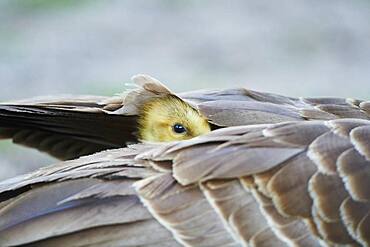
Canada goose (Branta canadensis) chick under the feathers of its mother, Frankonia, Bavaria, Germany, Europe
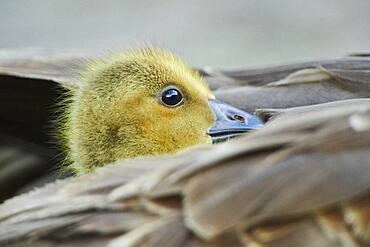
Canada goose (Branta canadensis) chick under the feathers of its mother, Frankonia, Bavaria, Germany, Europe
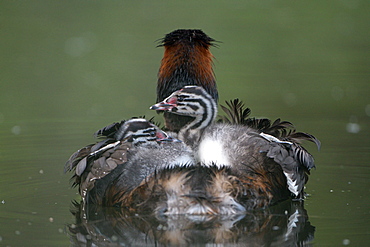
Great crested grebe (Podiceps cristatus), adult bird with chicks, Krickenbecker Seen, Nettetal, North Rhine-Westphalia, Germany, Europe
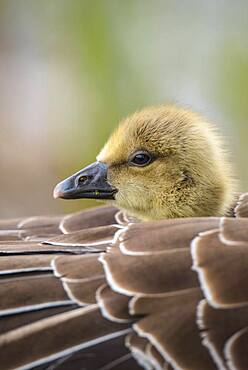
Gosling of a Greylag goose ( anser anser) in back plumage, chick, cute, protection, sheltered, Hannover, Lower Saxony, Germany, Europe
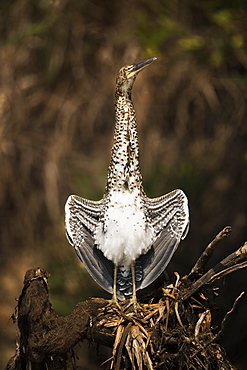
Juvenile Rufescent Tiger Heron (Tigrisoma Lineatum) Stretching It's Wings, Mato Grosso Do Sul, Brazil
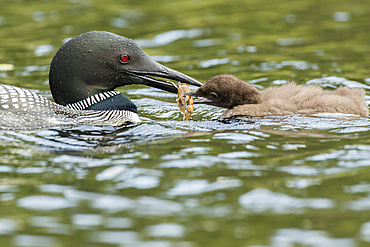
Common loon (Gavia immer) feeding a young loon with a crawfish in La Mauricie National Park; Quebec, Canada
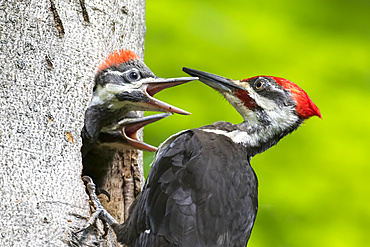
Pileated woodpecker (Dryocopus pileatus) feeding it's young at the nest hole, La Mauricie National Park; Quebec, Canada

A hungry young pileated woodpecker (Dryocopus pileatus) is crying at the nest hole, La Mauricie National Park; Quebec, Canada
